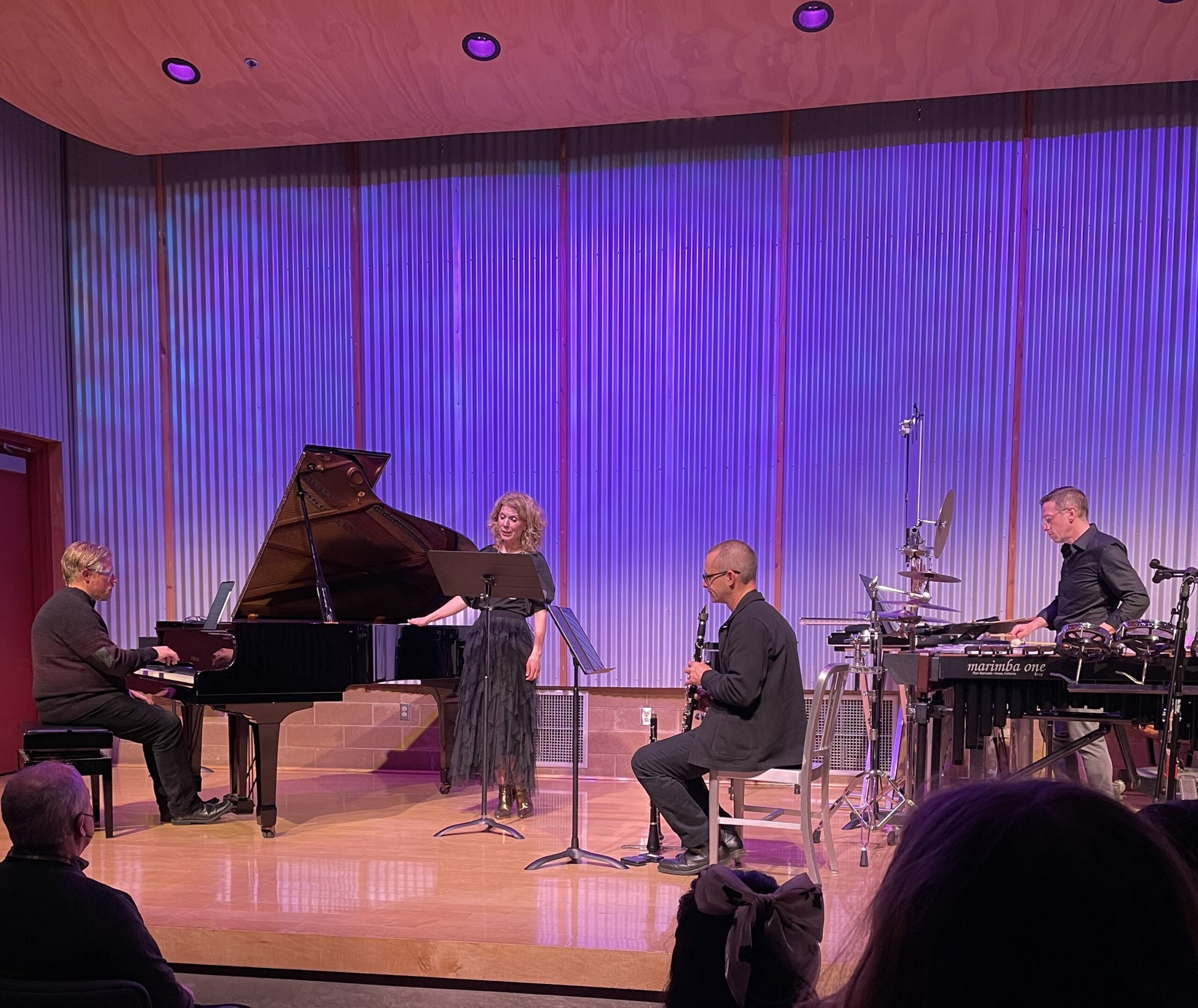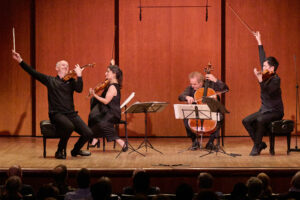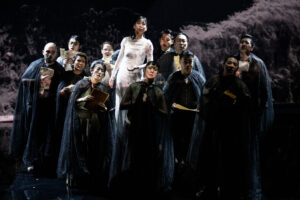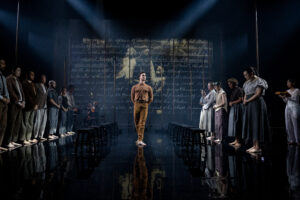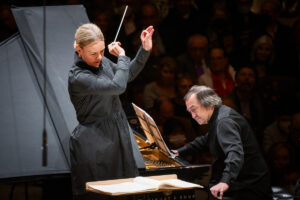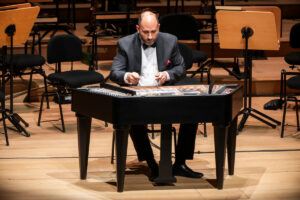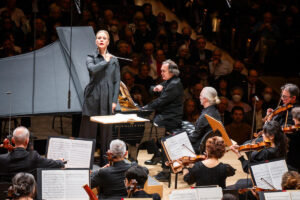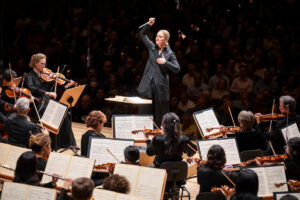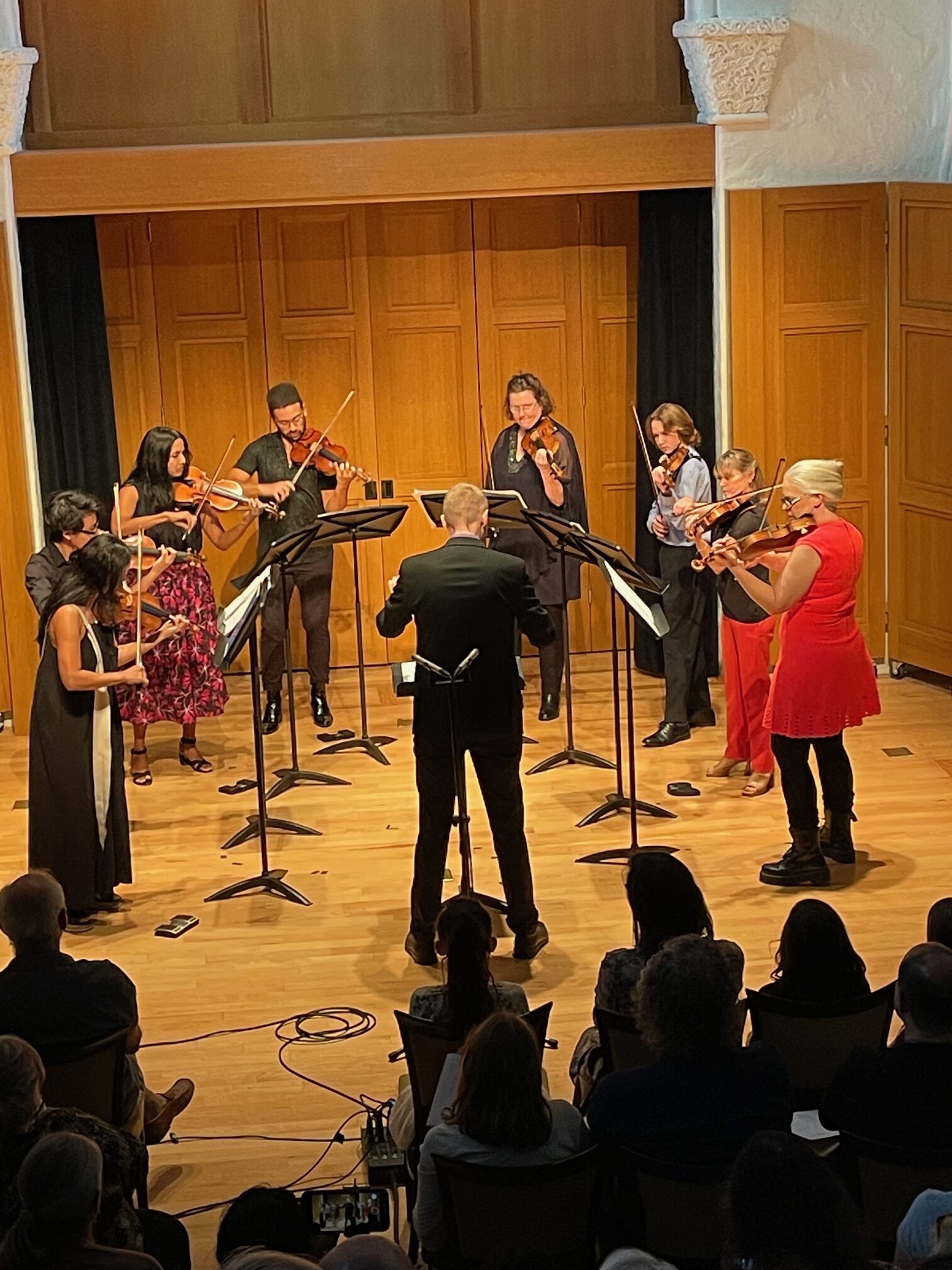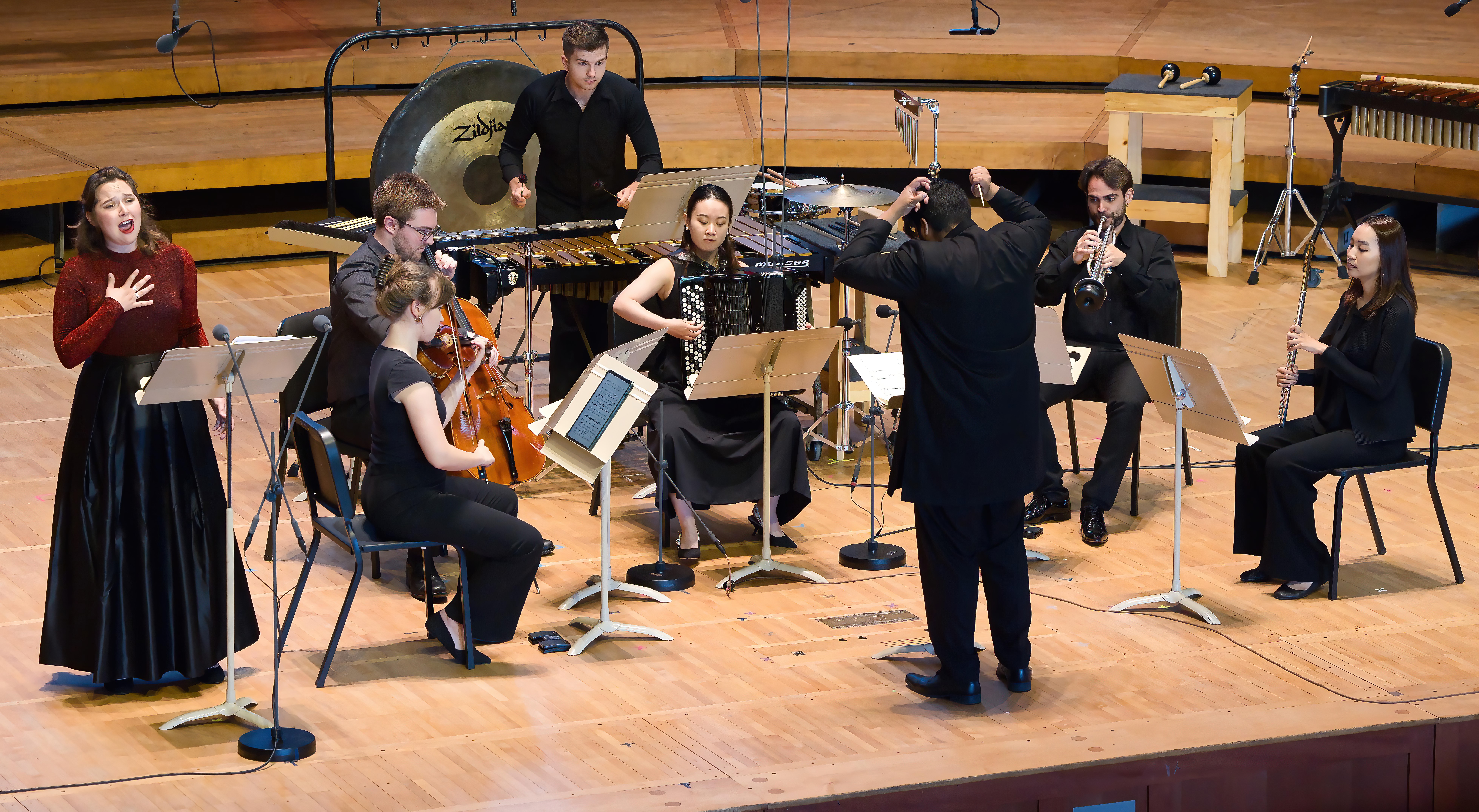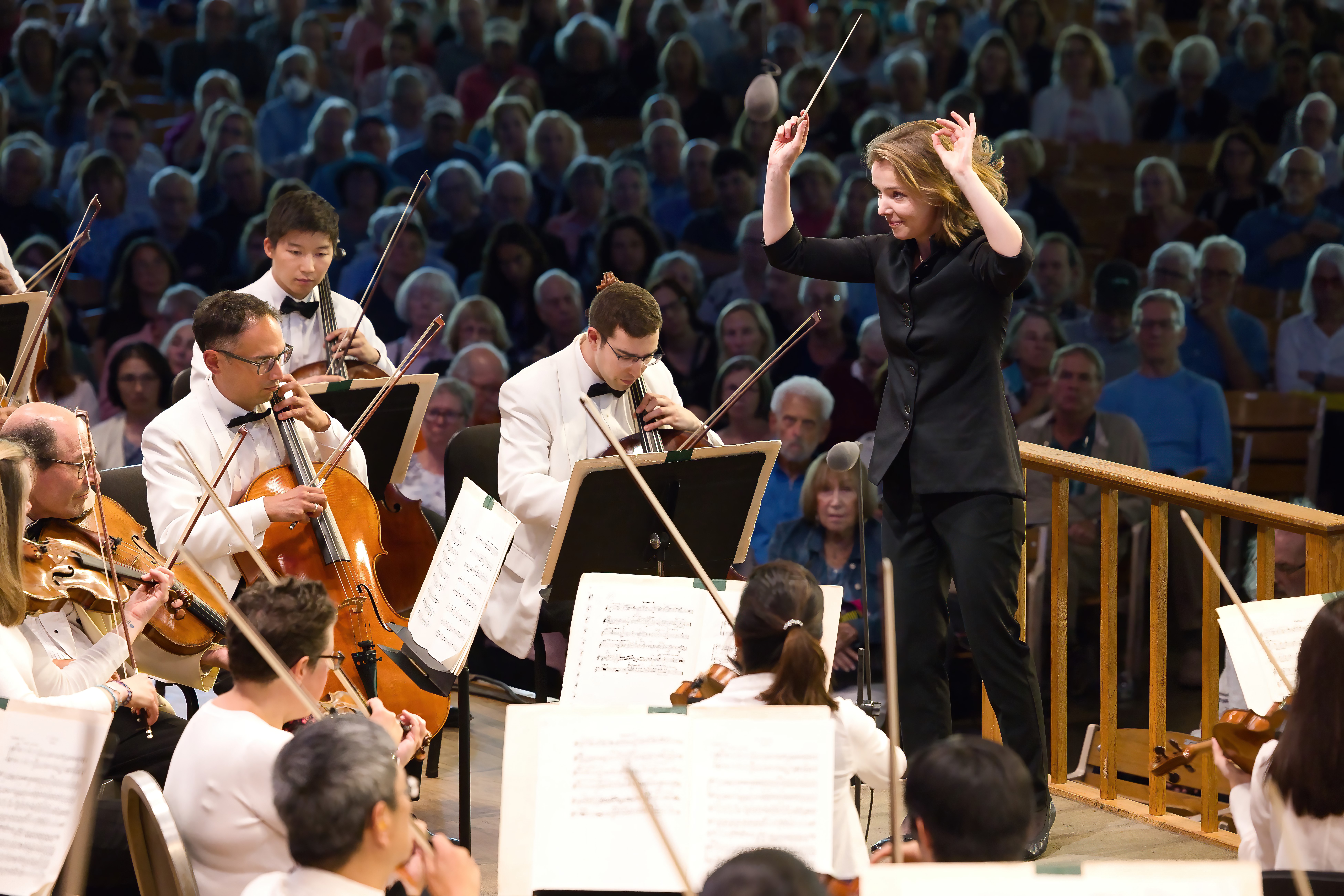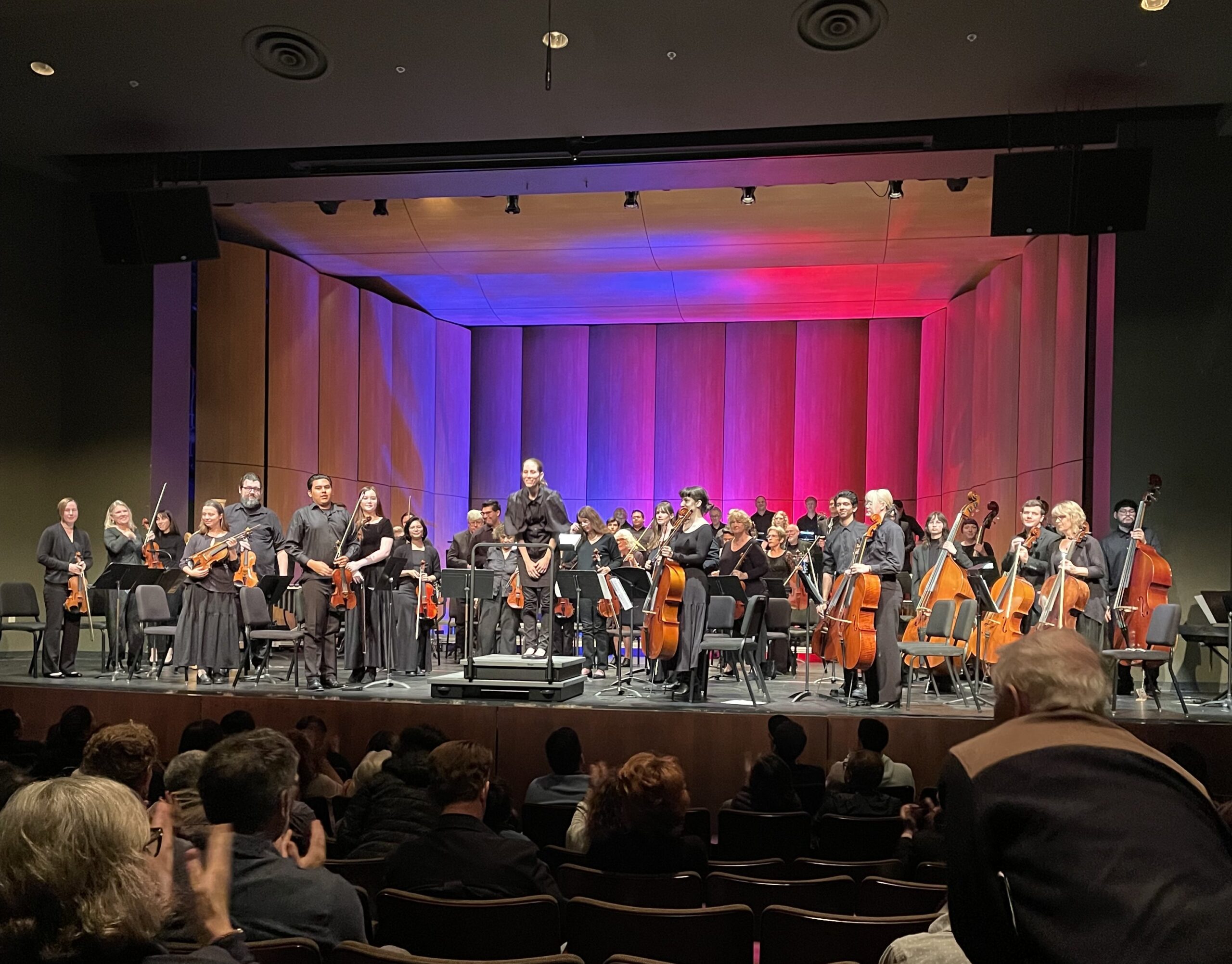
On Saturday, May 4th, 2024 the Ventura College Department of Performing Arts presented Ad Astra, a concert by the Symphony Orchestra and Chamber Orchestra. The program had something for everyone: the US Premiere of a new chamber work by Mark Menzies, a Shostakovich string quartet, part of a Prokofiev violin concerto featuring soloist Alex Fager and a full-bodied Star Wars suite for orchestra. A sizable audience filled Yunker Auditorium in the VC Performing Arts Center and the musicians completely covered the roomy stage.
The concert opened with the US premiere of Wai-rā-rawa, by Mark Menzies. This piece was inspired by the creation story of the Māori, the indigenous peoples of New Zealand. Mark Menzies was violin faculty for some years at CalArts and also a member of the Los Angeles-based Formalist Quartet. He now resides in New Zealand and is Professor of Music at the University of Canterbury. Menzies worked with the VC Chamber Orchestra on his piece during a recent visit to California. For this performance, the Chamber Orchestra was led by guest conductor Donovan Rutledge, a Ventura College alumnus.
Wai-rā-rawa opens with sustained chords that slowly unfold and develop an interesting texture. As the opening continues, the chords become somewhat disorganized and dissonant, perhaps suggesting the dark and formless beginnings of the earth. The music has a slightly eerie feel, but is never disheartening; it is solemn yet at the same time filled with a gentle reverence. An expressive violin solo is heard featuring a high, sustained pitch that adds to the uncertain atmosphere. As the piece proceeds, deep tutti chords with multiple harmonies materialize like clouds. Towards the finish, soft pianissimo notes are followed by broken rhythms at the ending. This music is distinguished by subtle rhythms, intriguing harmonies and textures, all smoothly directed by Donovan Rutledge. Wai-rā-rawa is both mysterious and wistful with perfect balance for describing the primal creation.
The second work on the program was String Quartet No. 8 in C minor (1960), by Dmitri Shostakovich, also performed by the chamber orchestra. For this concert the parts were doubled, with two instruments on each. The opening Lento movement was appropriately grim, with all of the repression of the old Soviet system seeming to weigh it down. There was good coordination and intonation among the players, however, with no uncertainty among the sections. The transitions to the faster Allegro and Allegretto movements were successfully negotiated; the violas were especially well-coordinated. The delicate textures in the dance-like segments were nicely observed, with some tension slyly creeping in.
The final Lento movements brought a return to the more severe feeling of the opening as strong tutti chords turned darkly dramatic. The players kept good control of the dynamics in all of the movements and also in the final decrescendo at the finish. String Quartet No. 8 is essential late Shostakovich, with all of his characteristic gloominess during this period fully evoked by skillful playing in this performance.
After a short intermission, the full Ventura College Symphony Orchestra took their places, filling the entire stage. The Andantino movement of Sergei Prokofiev’s Violin Concerto No. 1 in D Major, Op. 110 (1923) was next, with soloist Alex Fager. He is the winner of this year’s Allegro Solo Competition, open to musicians of all ages residing in Ventura County. This piece began with soft tremolos in the orchestra violin section, followed by a strong entrance from the soloist with a slow, expressive melody. As the phrasing became more active, Fager’s sound came across with a clear tone that reached out above the orchestra to fill the hall. As the movement proceeded, the mood turned stylish and lyrical, so characteristic of Prokofiev’s music. Fager’s skillful technique kept his violin in the foreground, even as variations in tempo, dynamics and texture rapidly changed. Towards the finish, the solo violin and flute played in a tricky counterpoint, with great effect. The movement then ended as quietly as it had begun. Violin Concerto No. 1 has a challenging variety of musical gestures in the Andantino movement and soloist Fager capably led the way throughout.
Although it was May the fourth and very appropriate, I will admit that I was a bit apprehensive about the last work on the concert program, the Star Wars Suite for Orchestra (1977) by John Williams. Star Wars is so overexposed that it has become something of a cultural cliché. An orchestra performing such a familiar piece runs the risk of disappointing its audience. This is big, sprawling music with five movements that include the themes that composer Williams has so artfully woven into this signature masterwork. The piece is full of challenges; there are many transitions to be navigated as the various leitmotifs are passed around between the sections. As the orchestra got going, the sounds and entrances of the various sections sharpened up nicely. Dynamics ranged from the barely audible to full blastissimo, and the orchestra fought successfully to maintain good balance. The string sections benefited from being at the front of the stage and provided solid support. The horns managed to be clearly heard from the very back of the risers during their important solos.
Vigorous applause was heard between each of the movements, and the orchestra seemed to build on the growing enthusiasm. The “Imperial March” was perhaps the most popular, with its full sound and driving beat. At the conclusion of the last movement, a long and loud standing ovation was given by the now-cheering crowd. Star Wars Suite for Orchestra might be a bit of a war horse, but the music still has surprising power when played by a live orchestra in a concert hall.
A good part of the credit for this fine performance by the Ventura College Symphony Orchestra must go to Director Ashley Walters. Her conducting style is everything a player wants: an unmistakable beat, precise cues and decisive dynamics. Walters adds no superfluous movements or theatrical histrionics, and her clarity of purpose brings real leadership to the podium. Walters undoubtedly carried this same focus and energy into rehearsal, and the result was an outstanding concert of compelling music.

